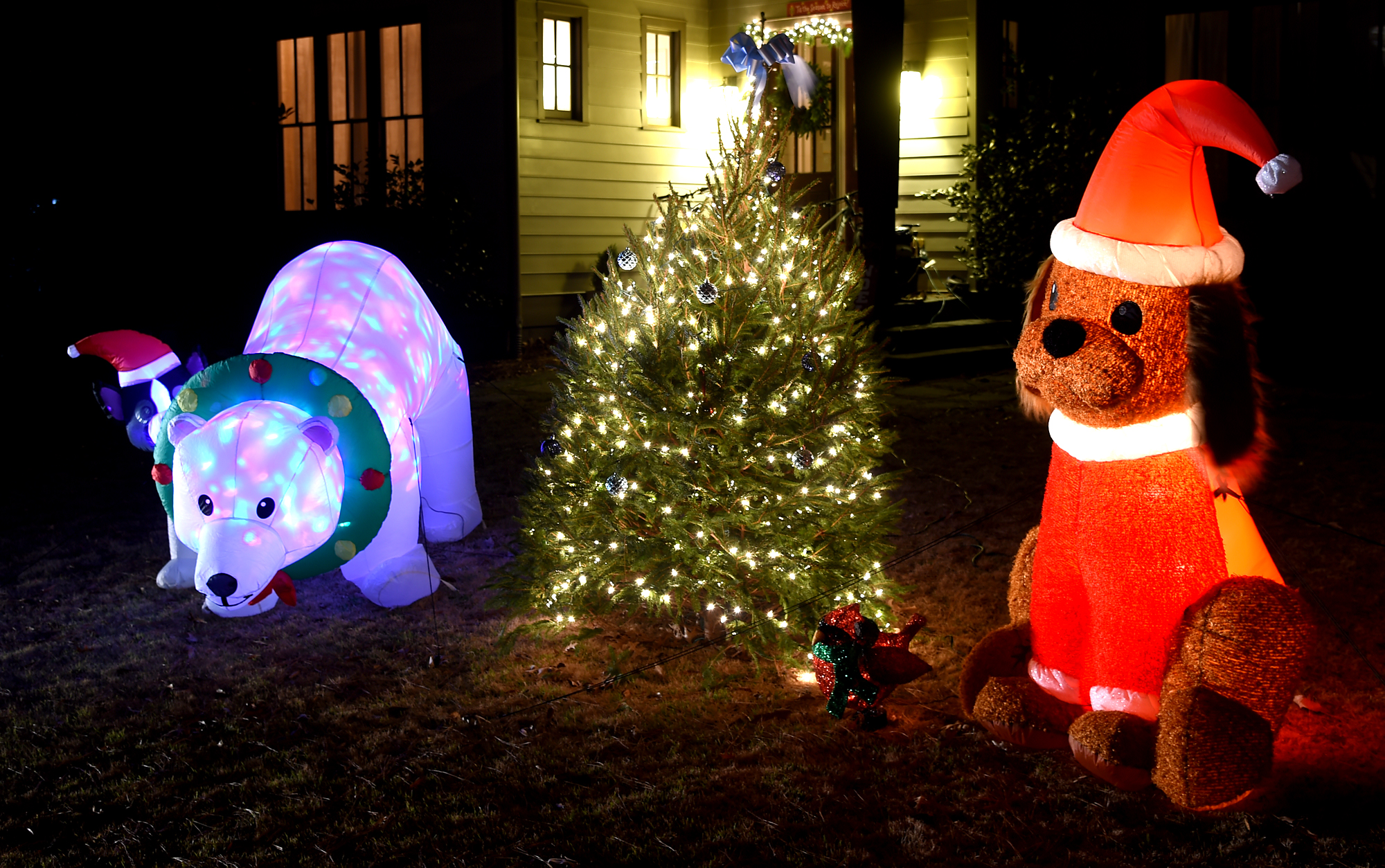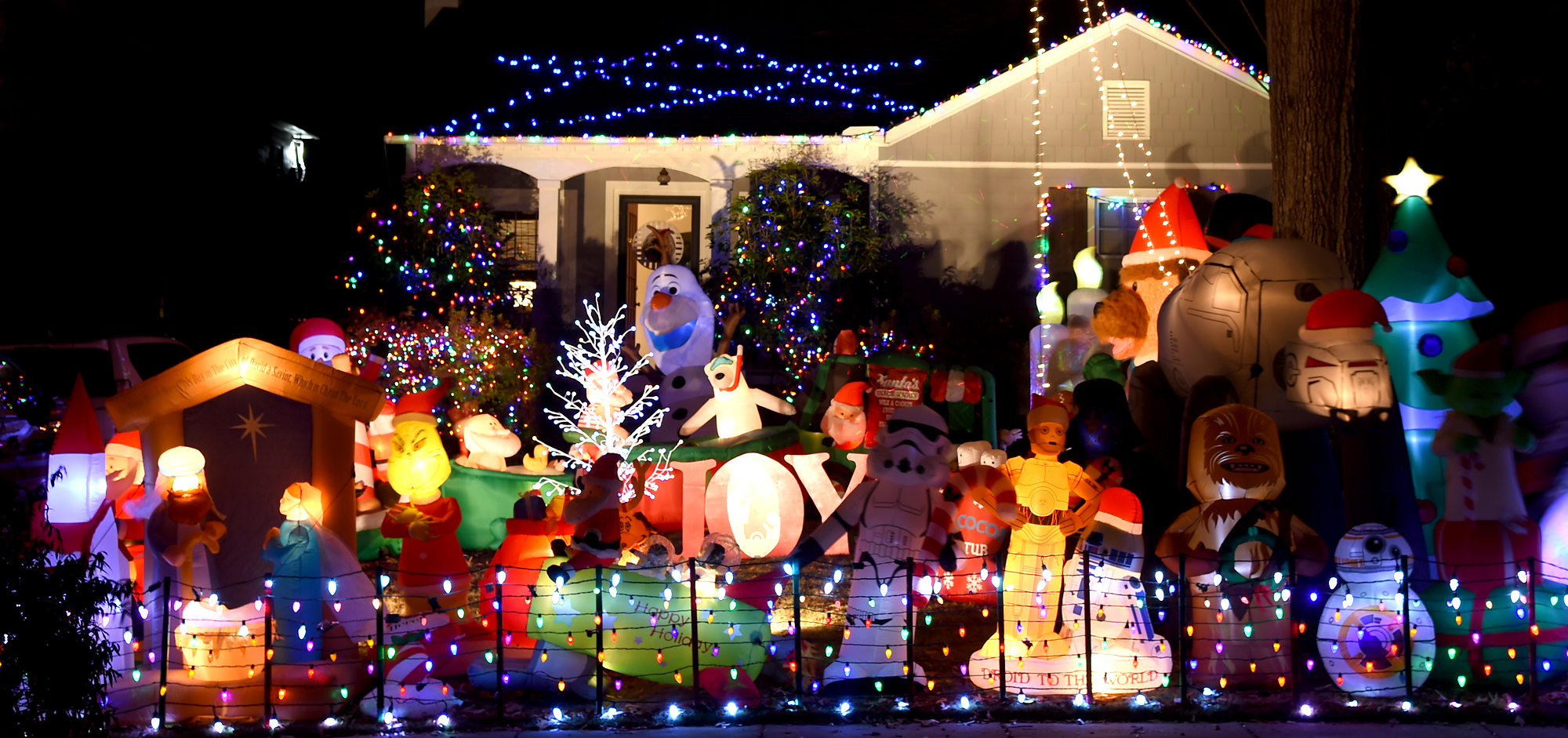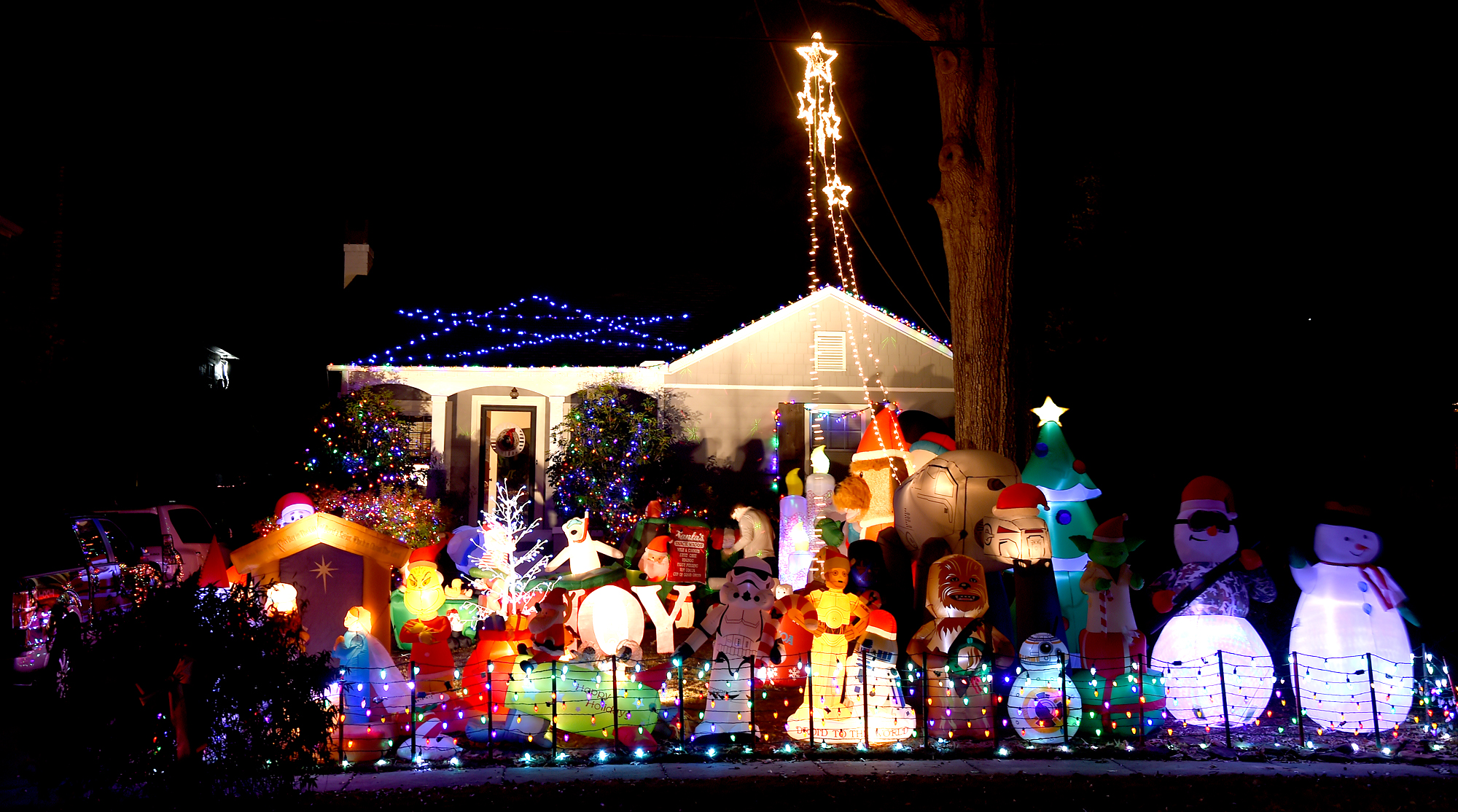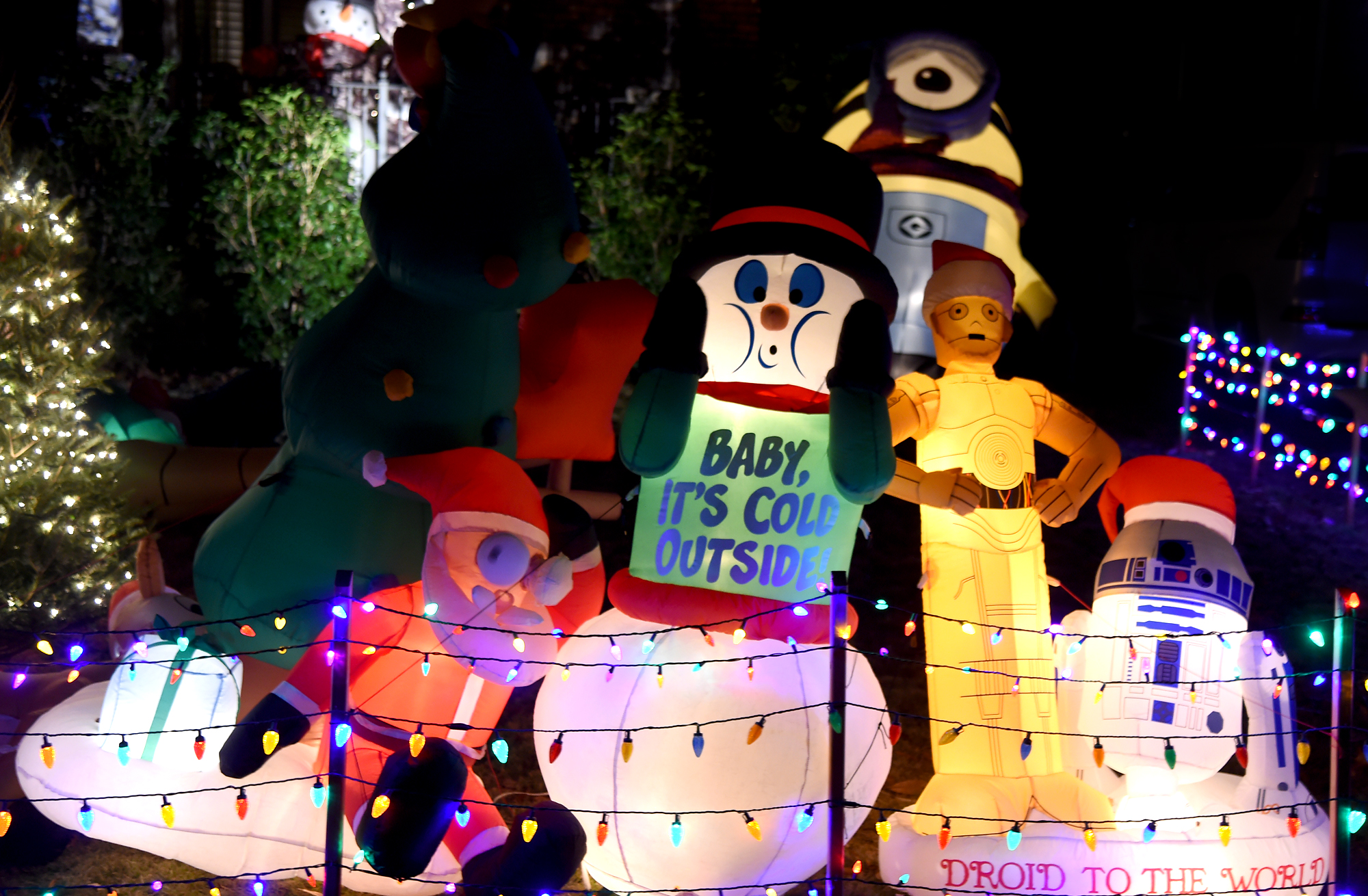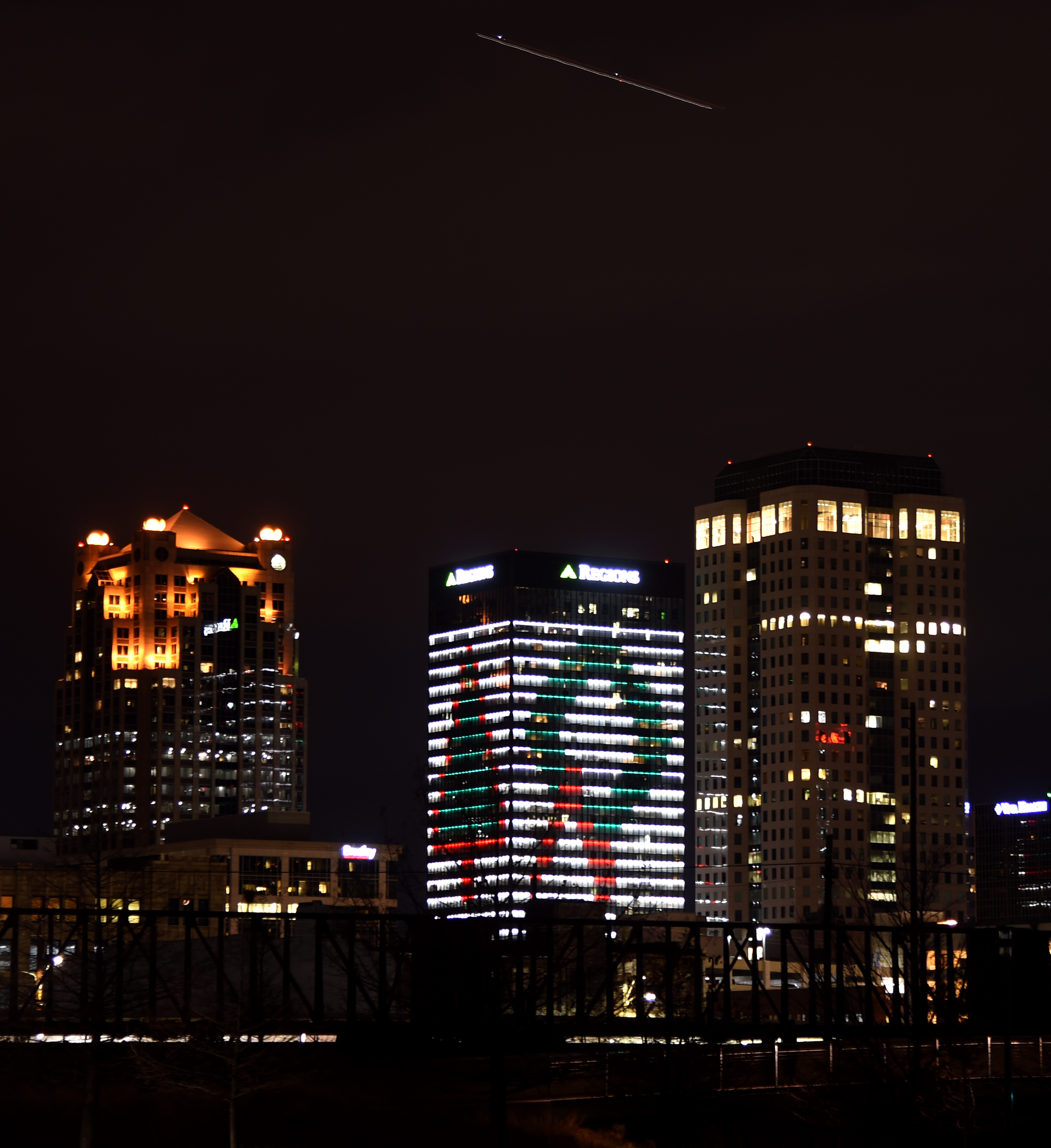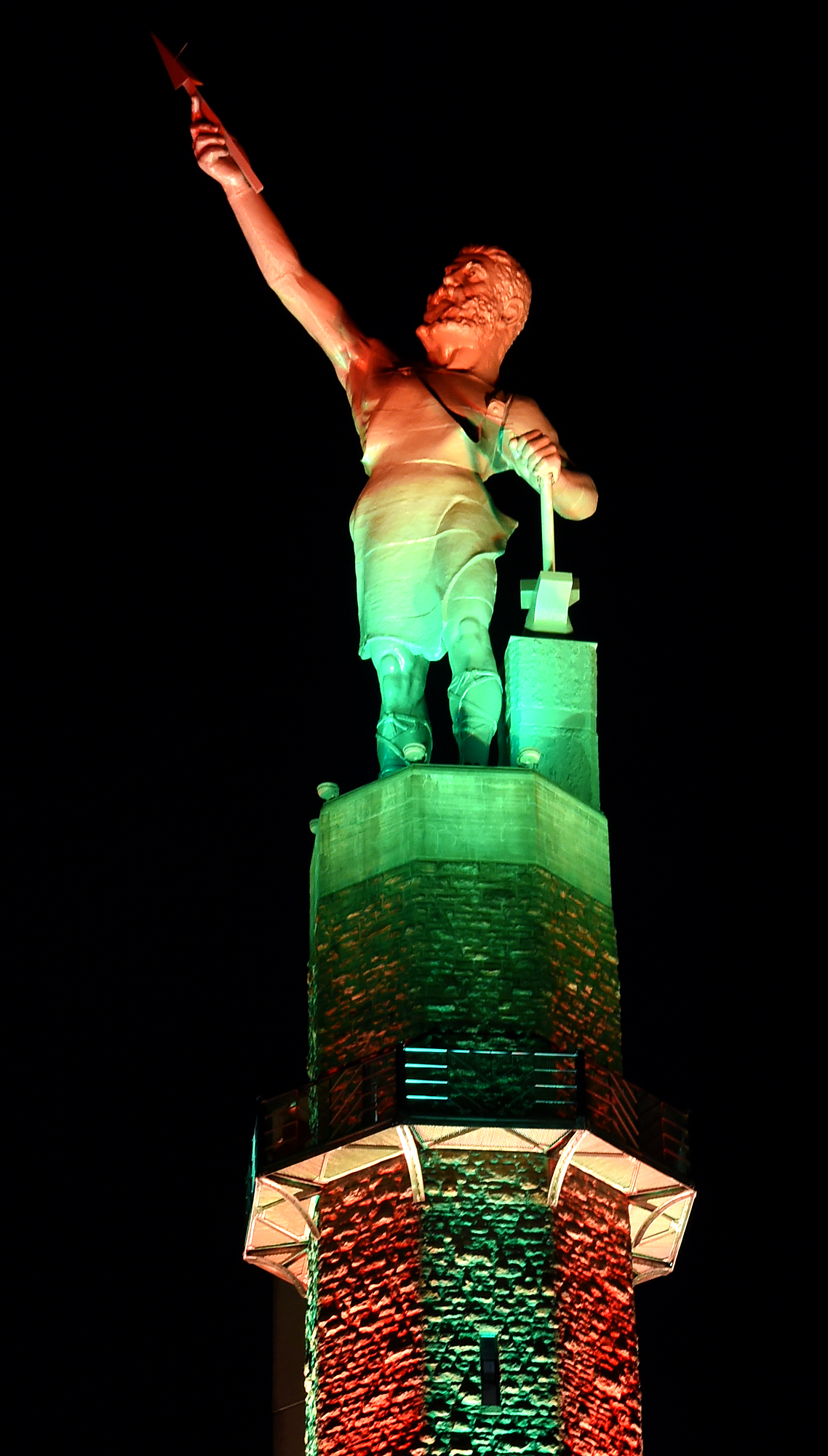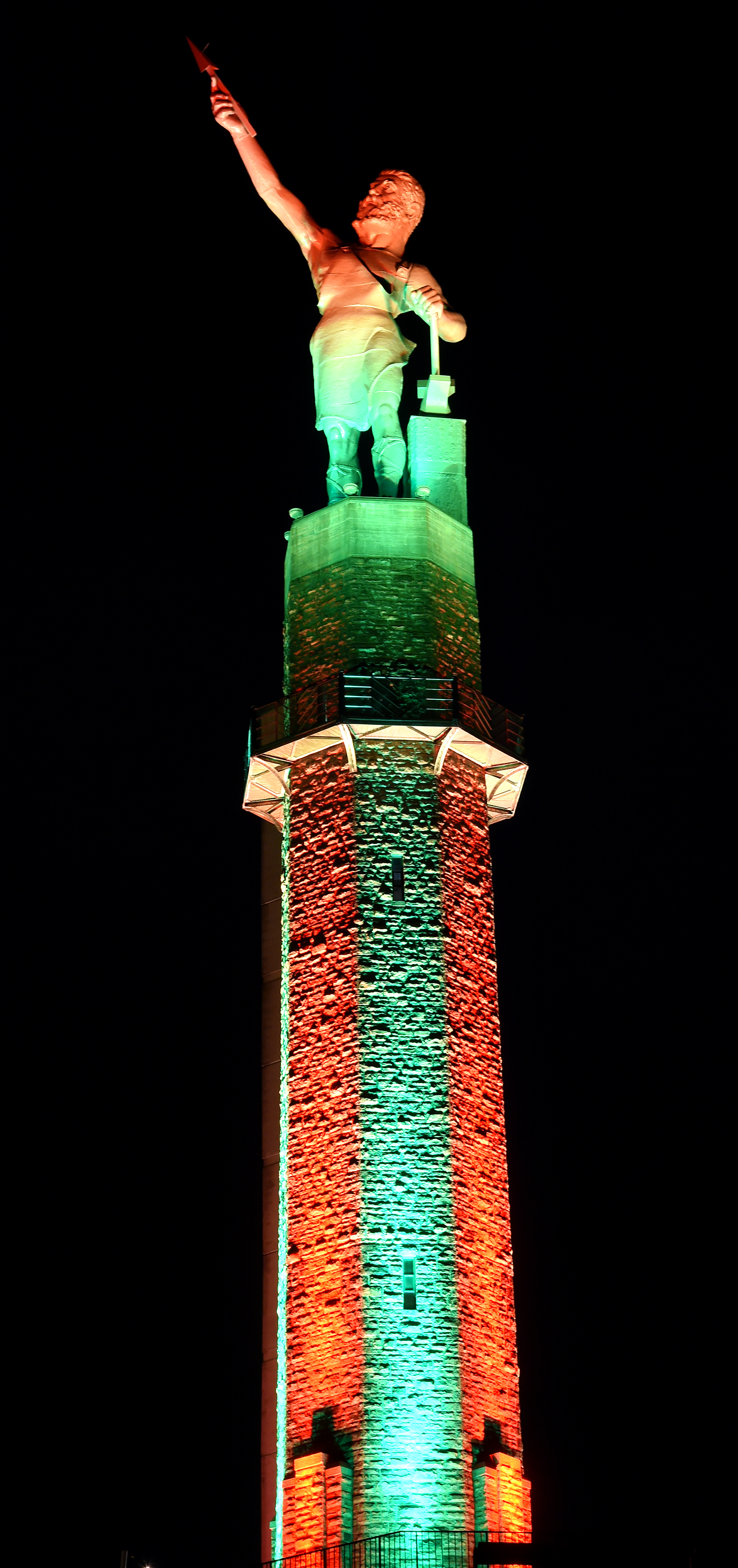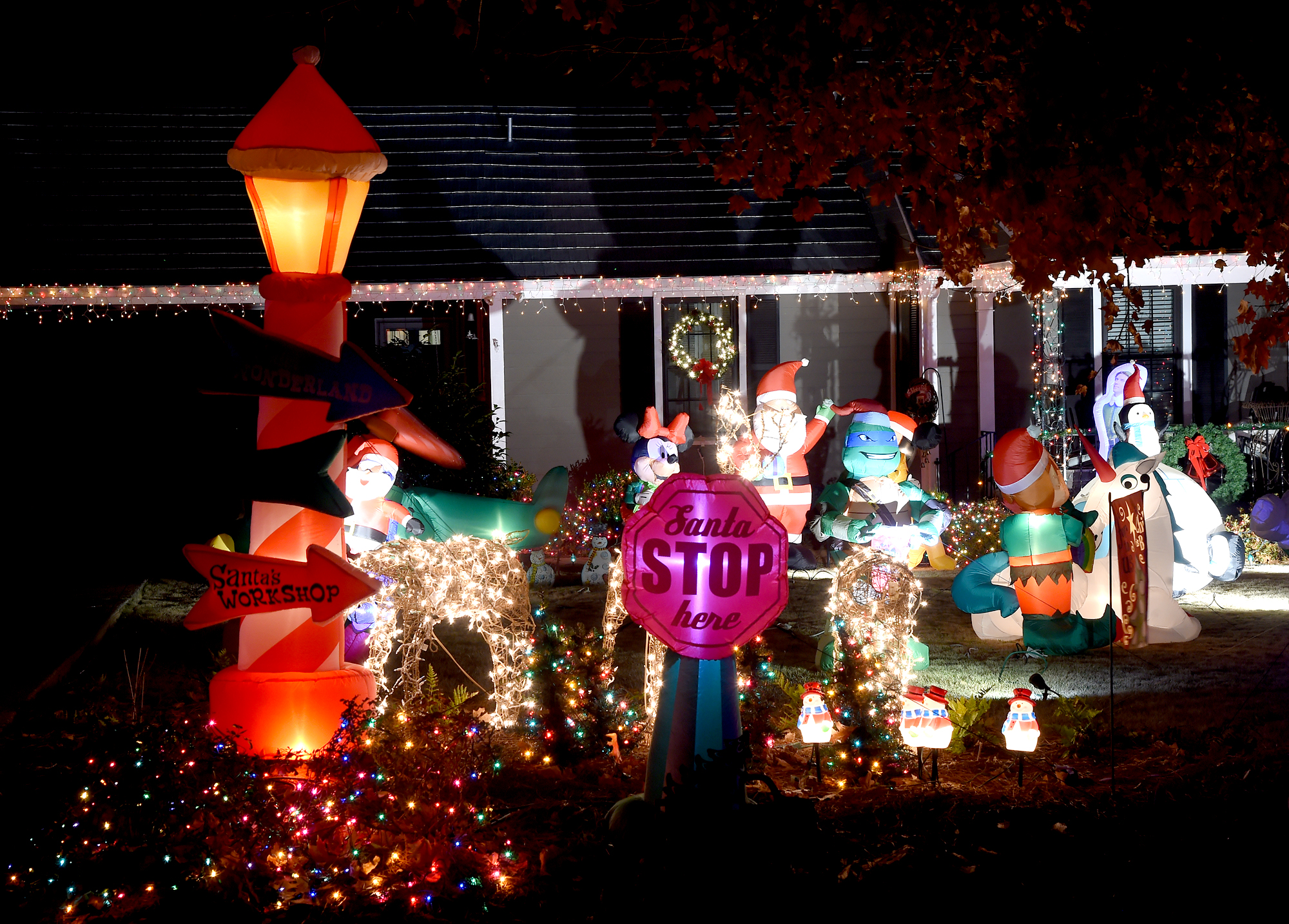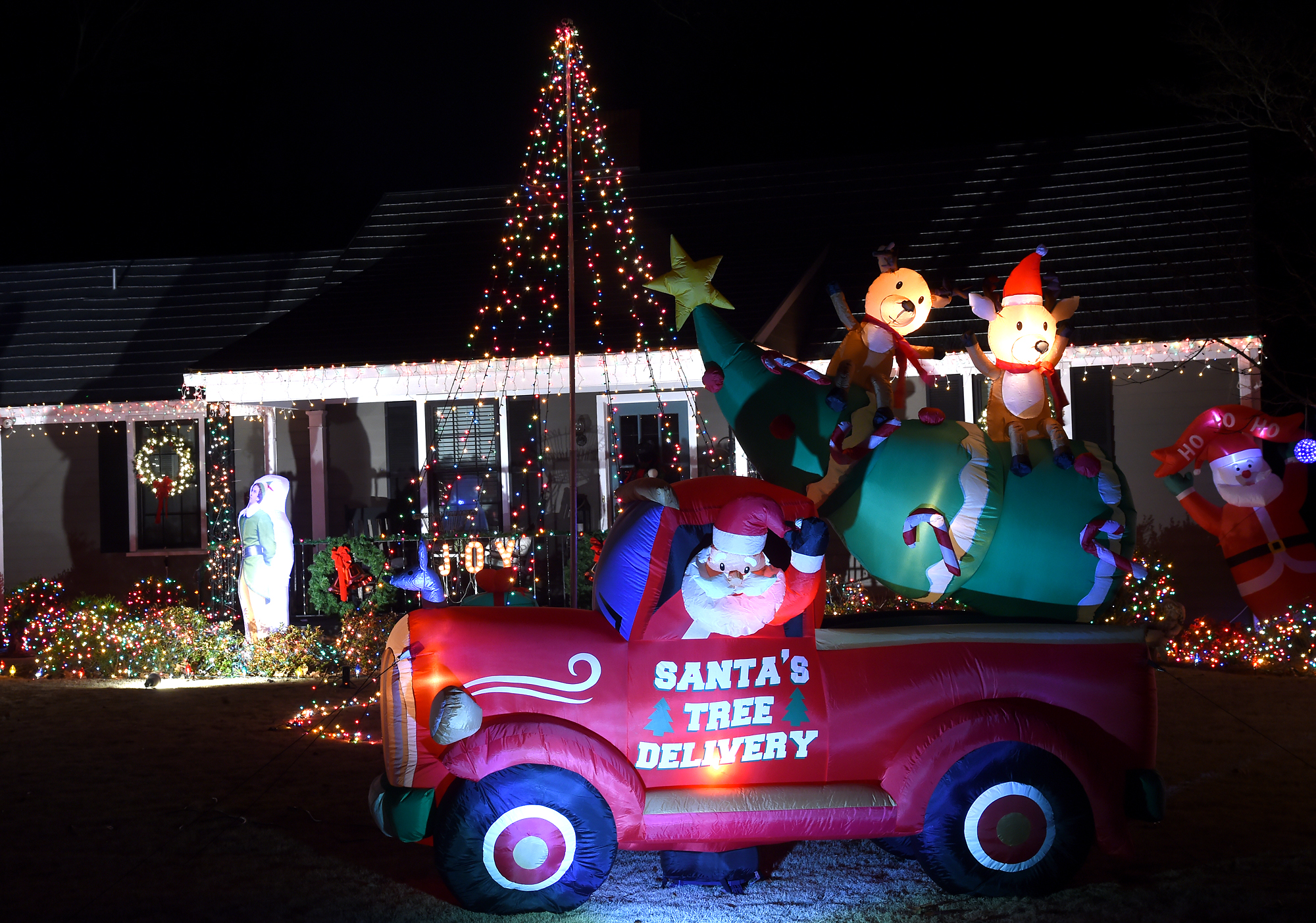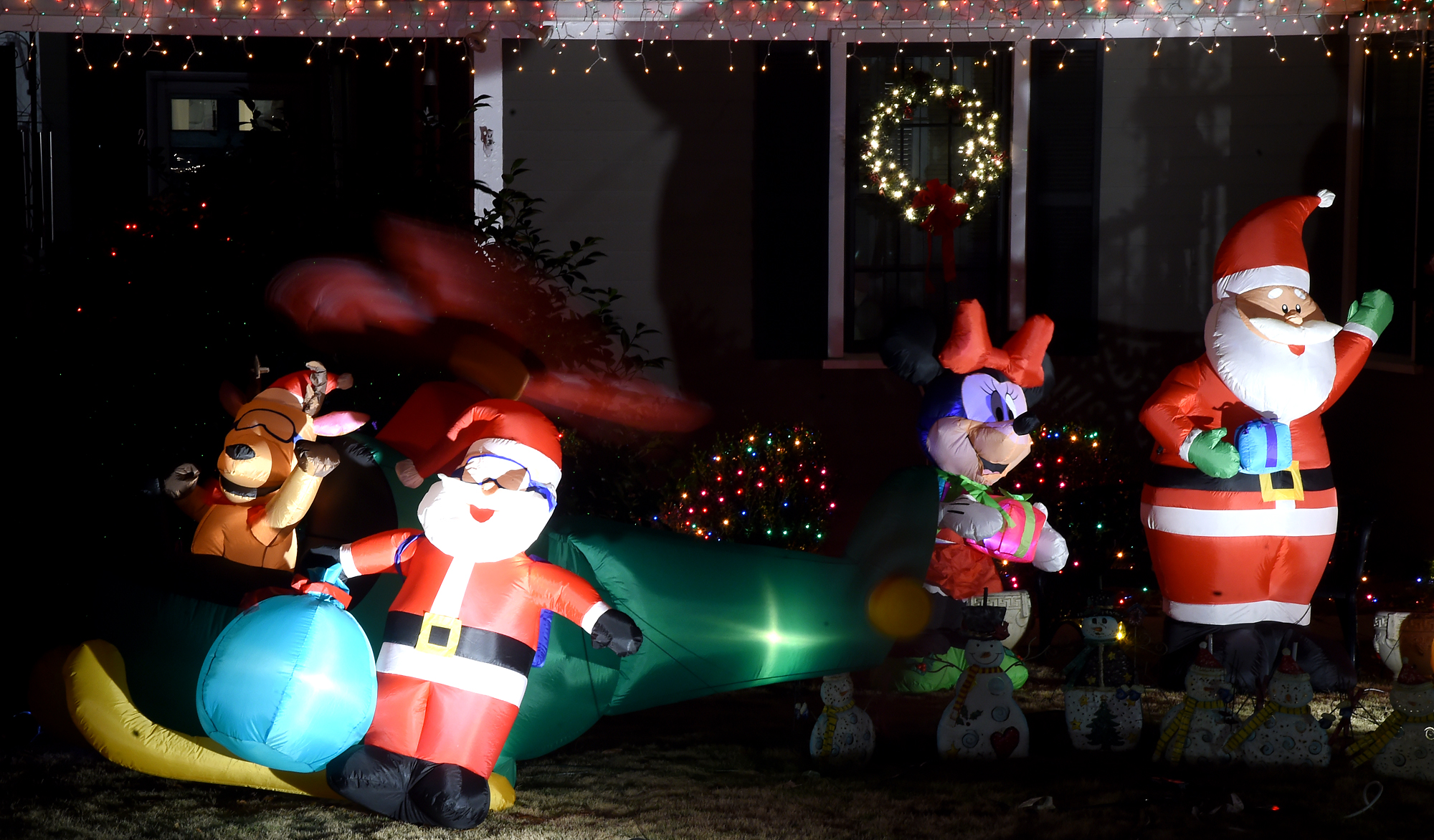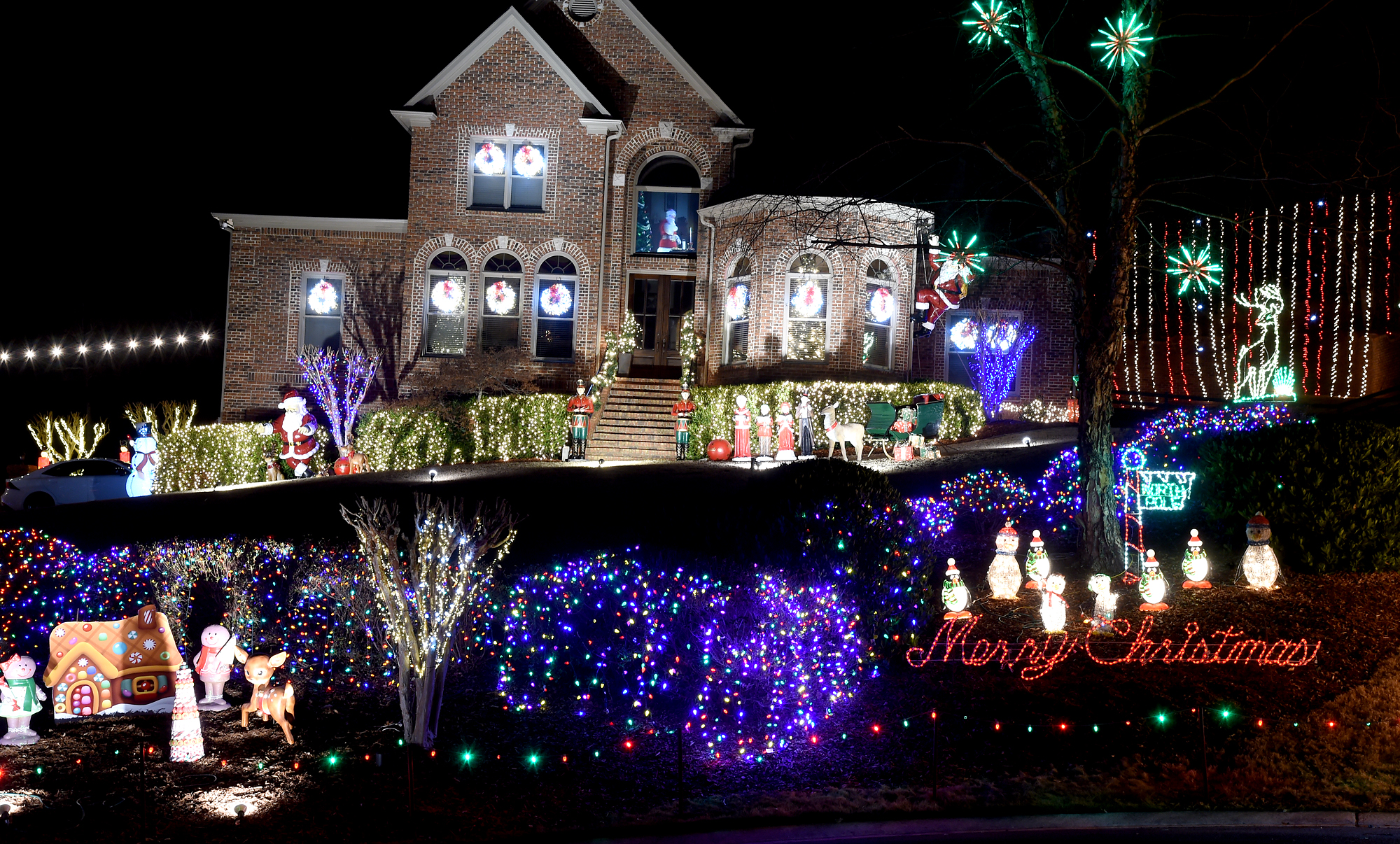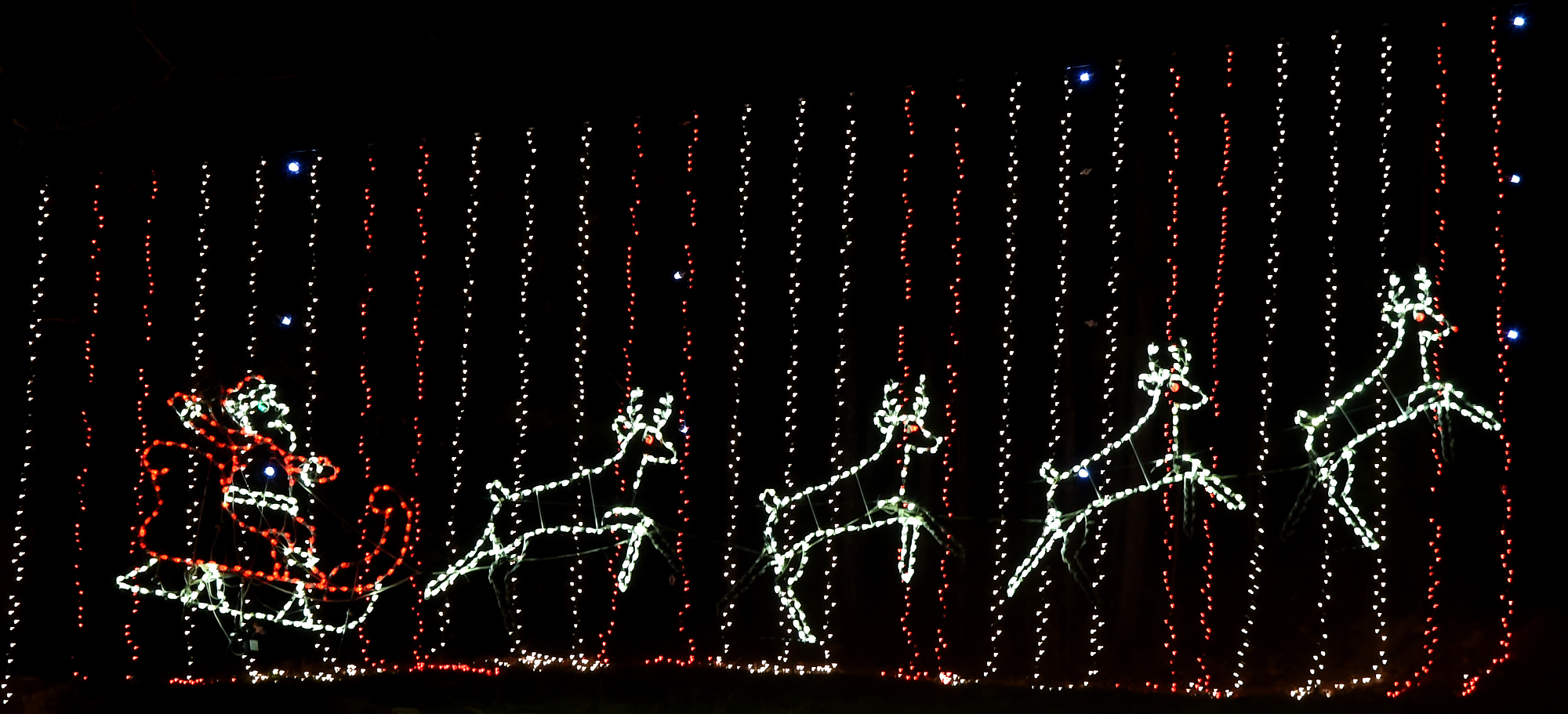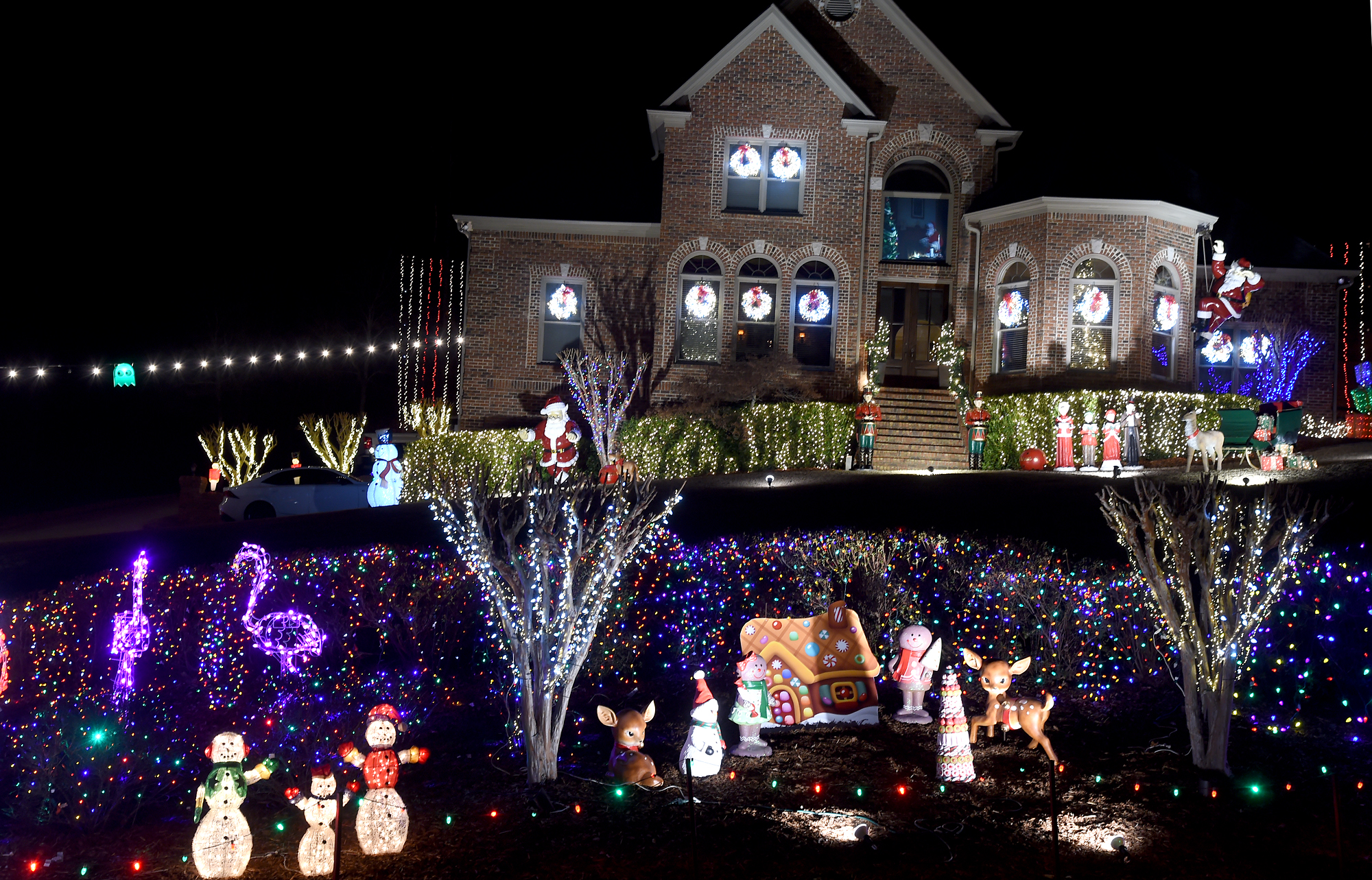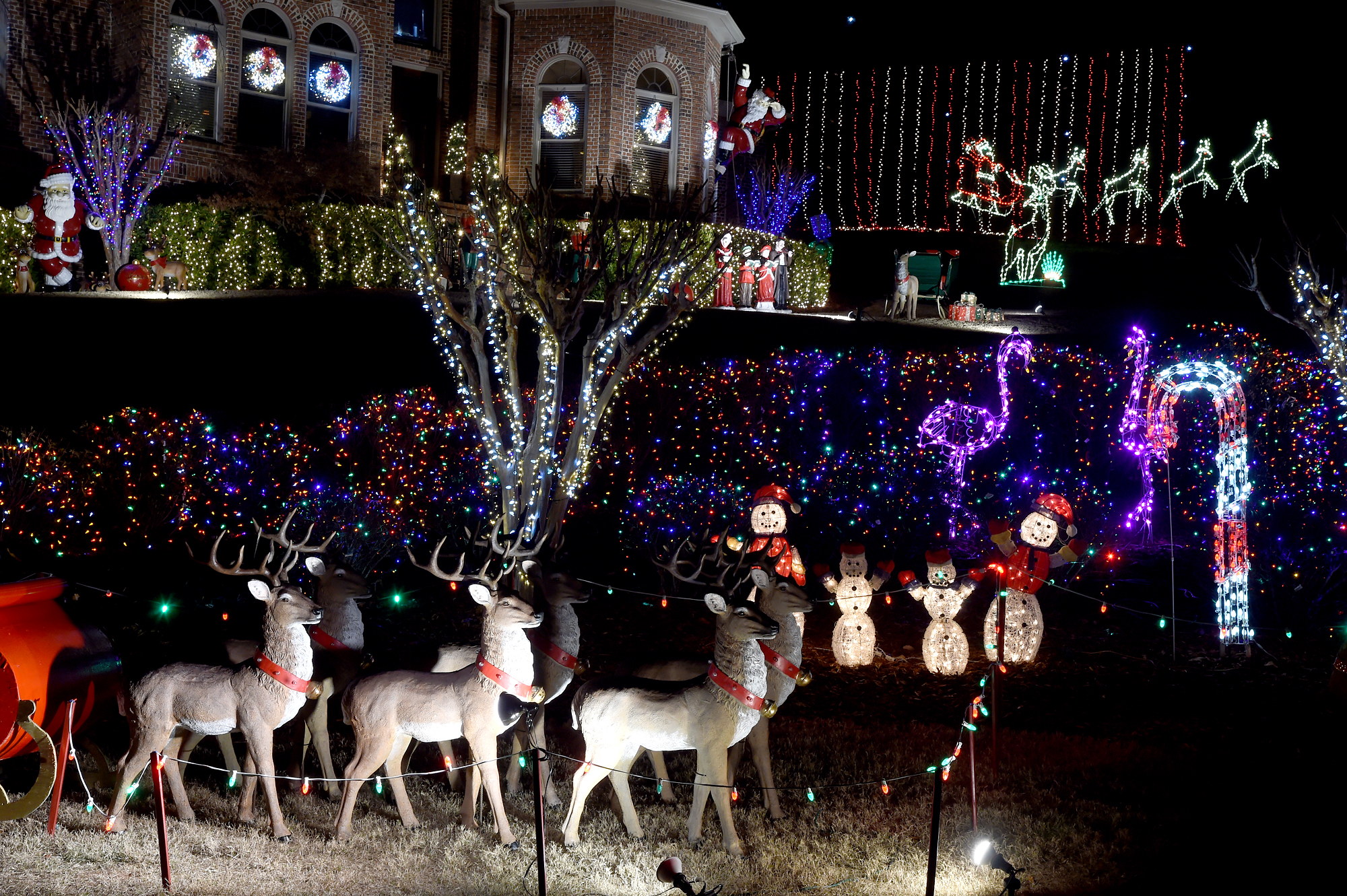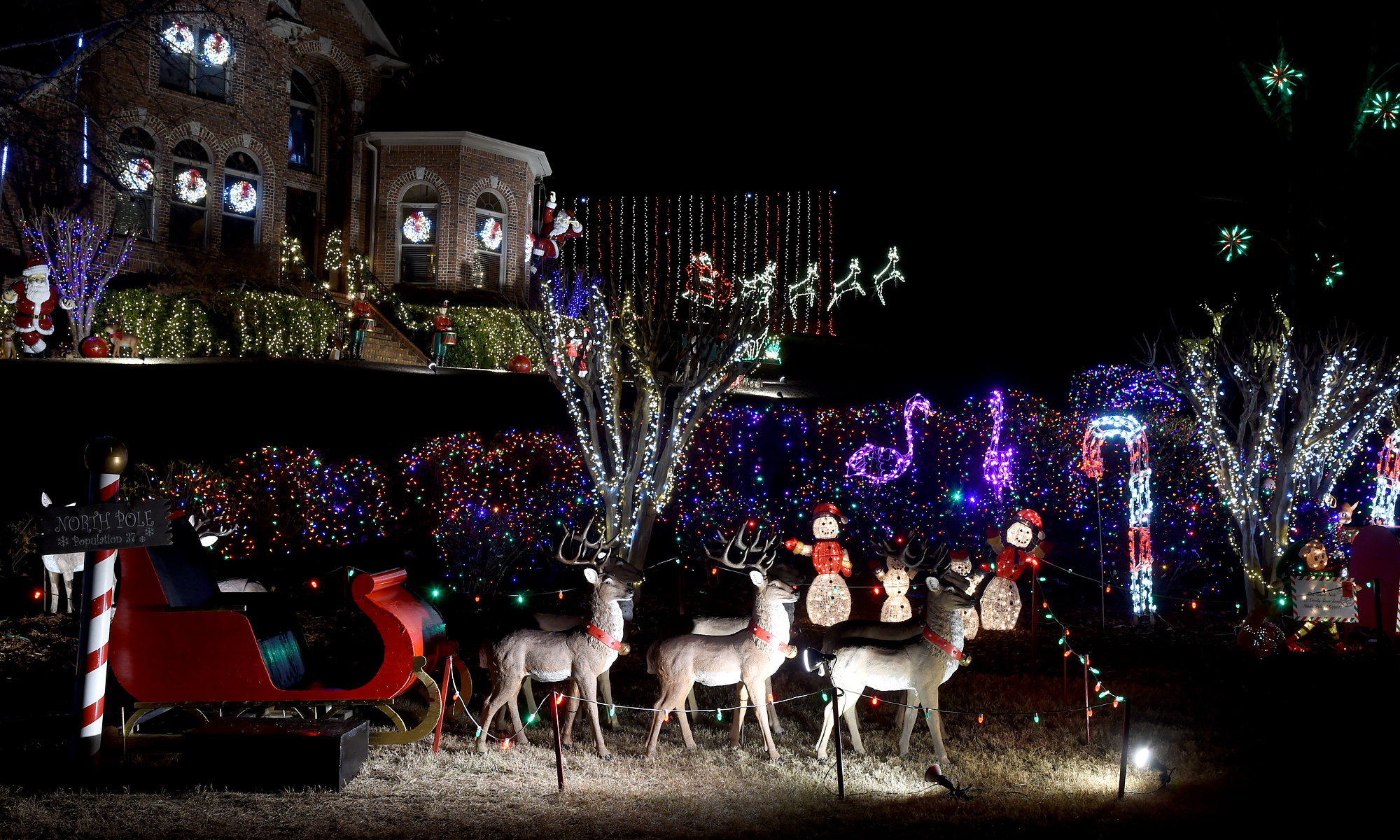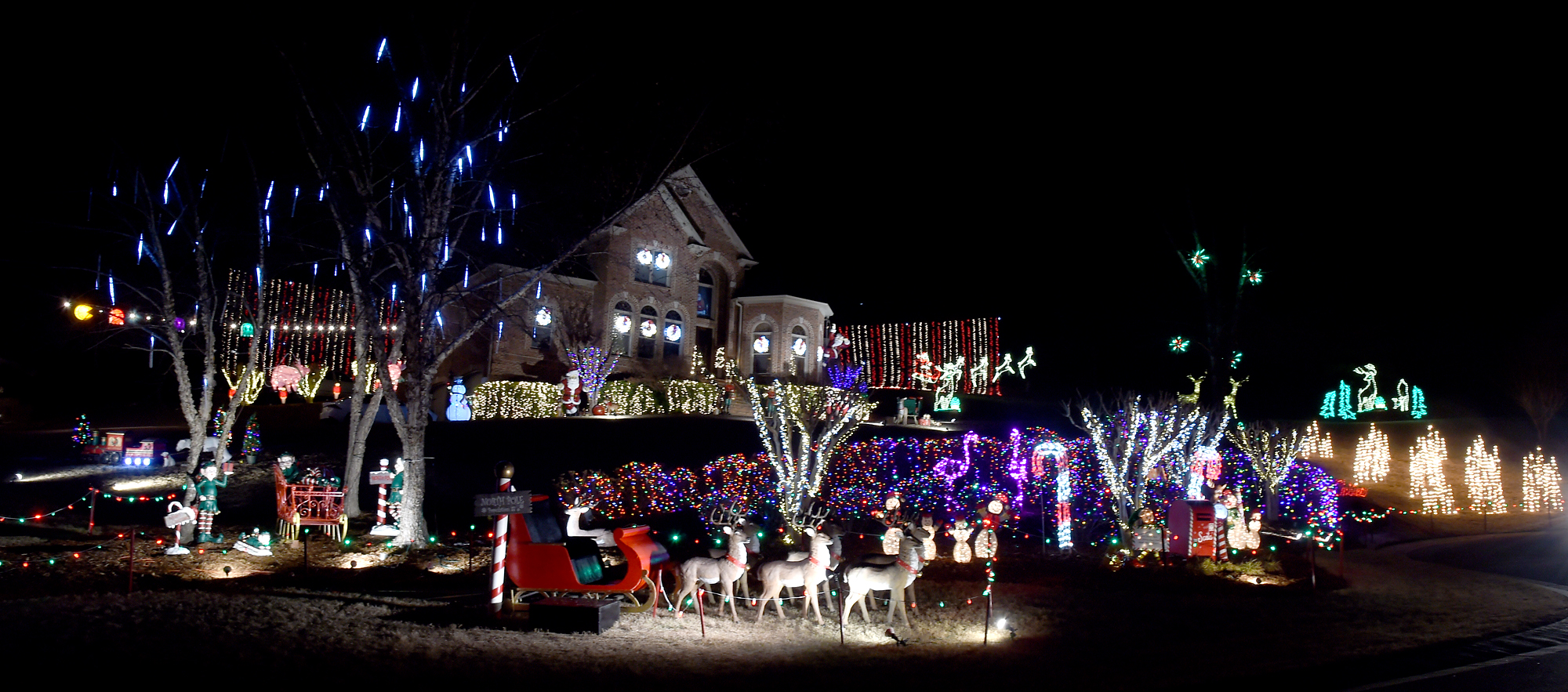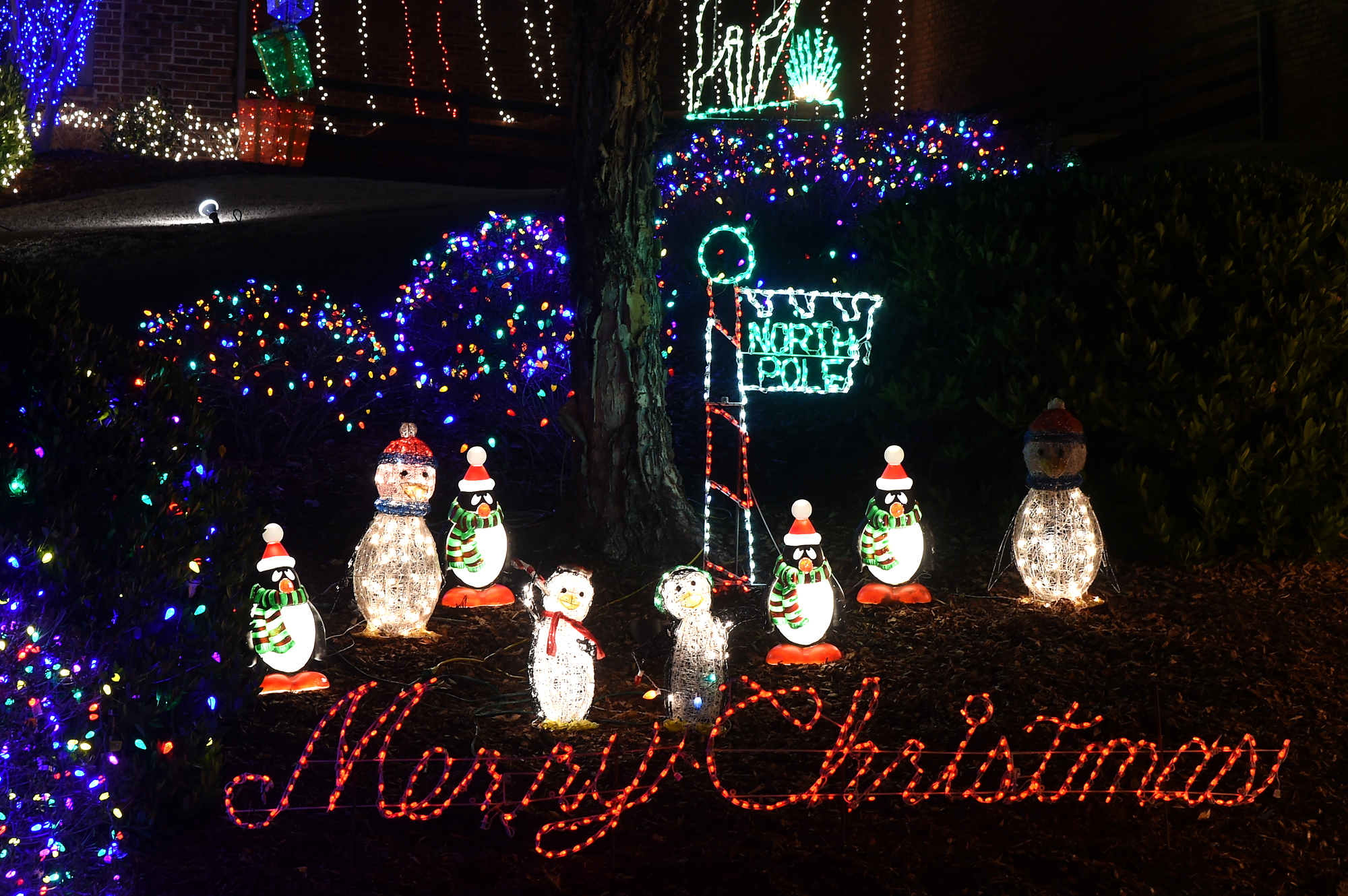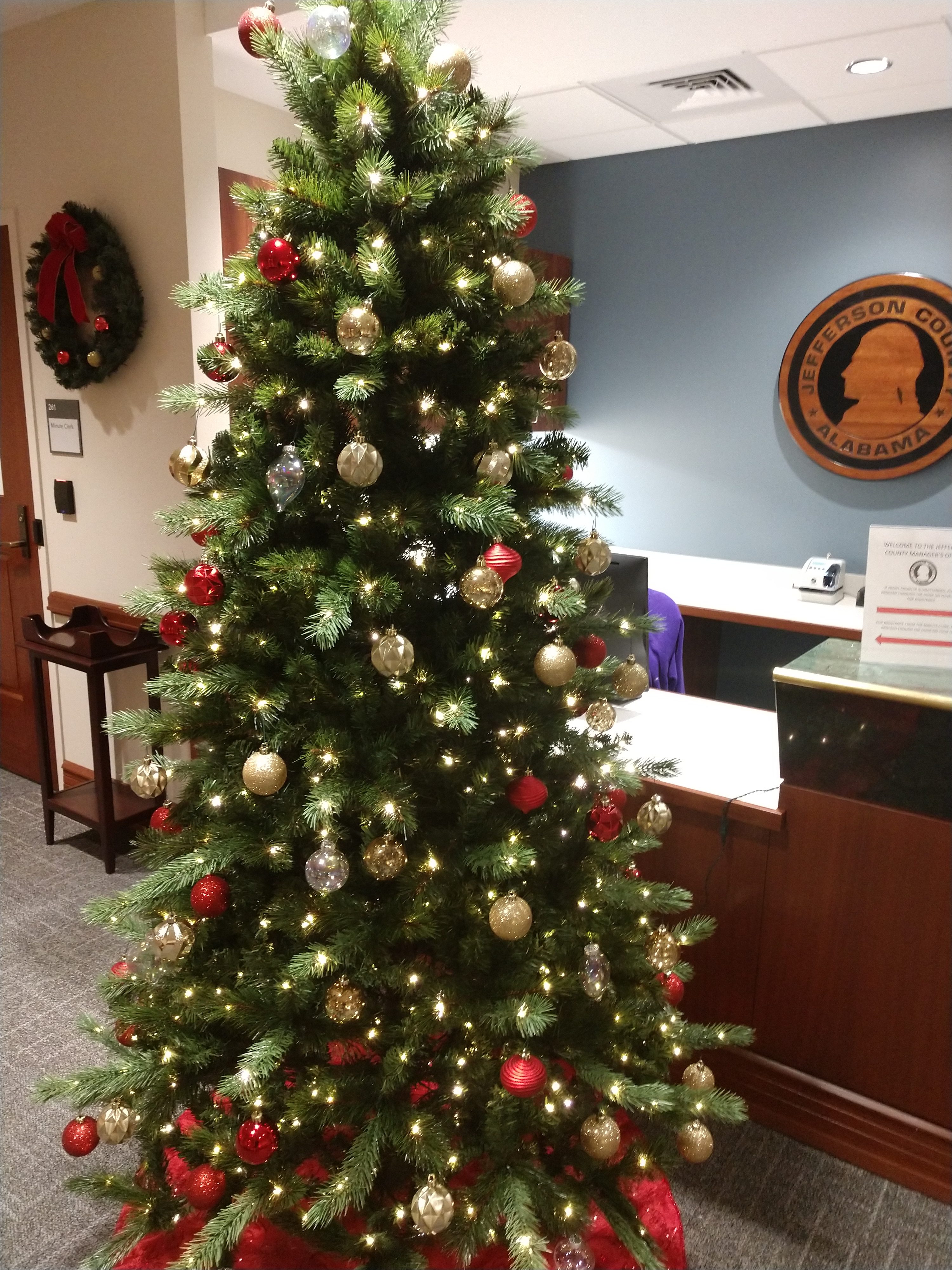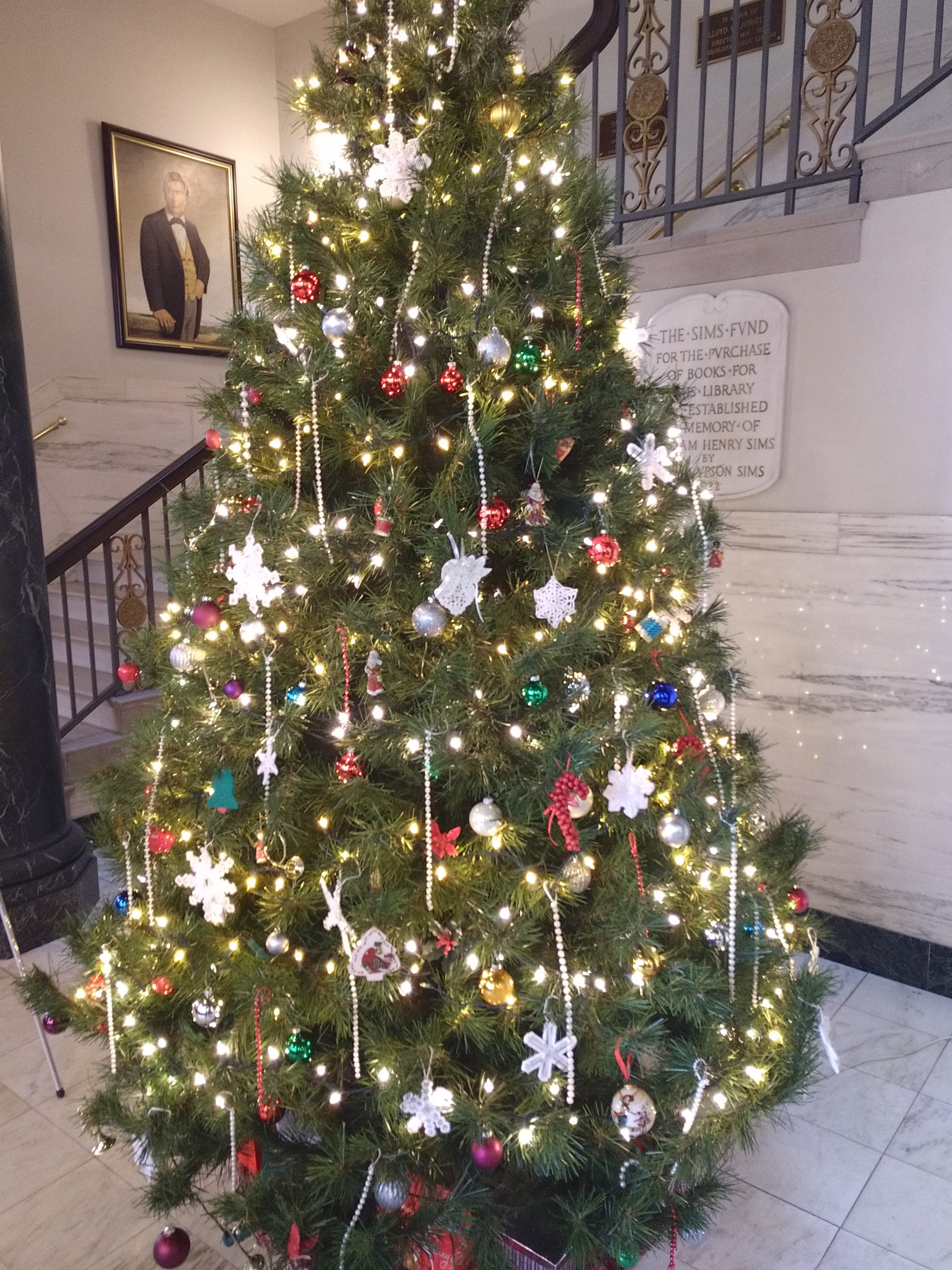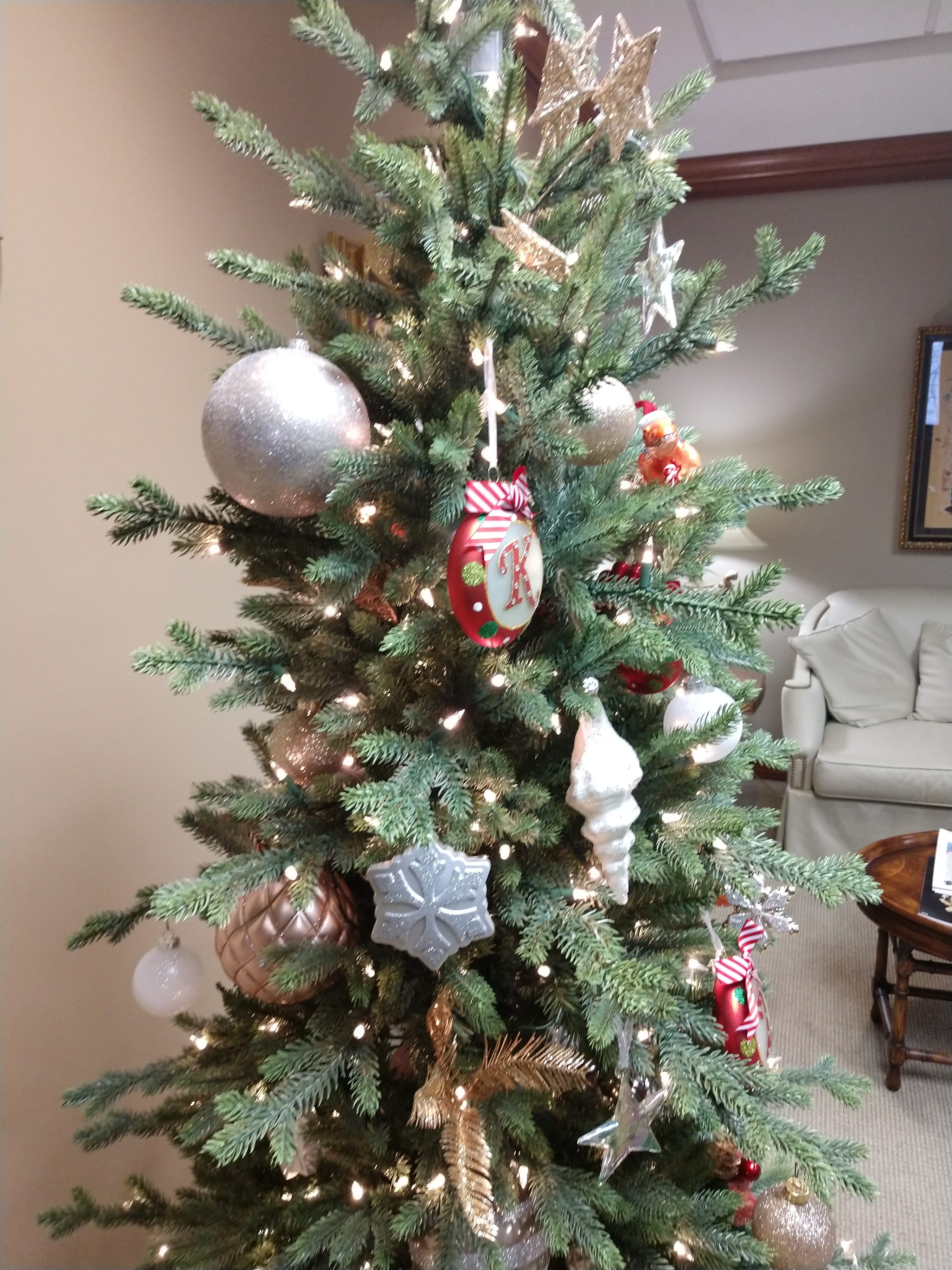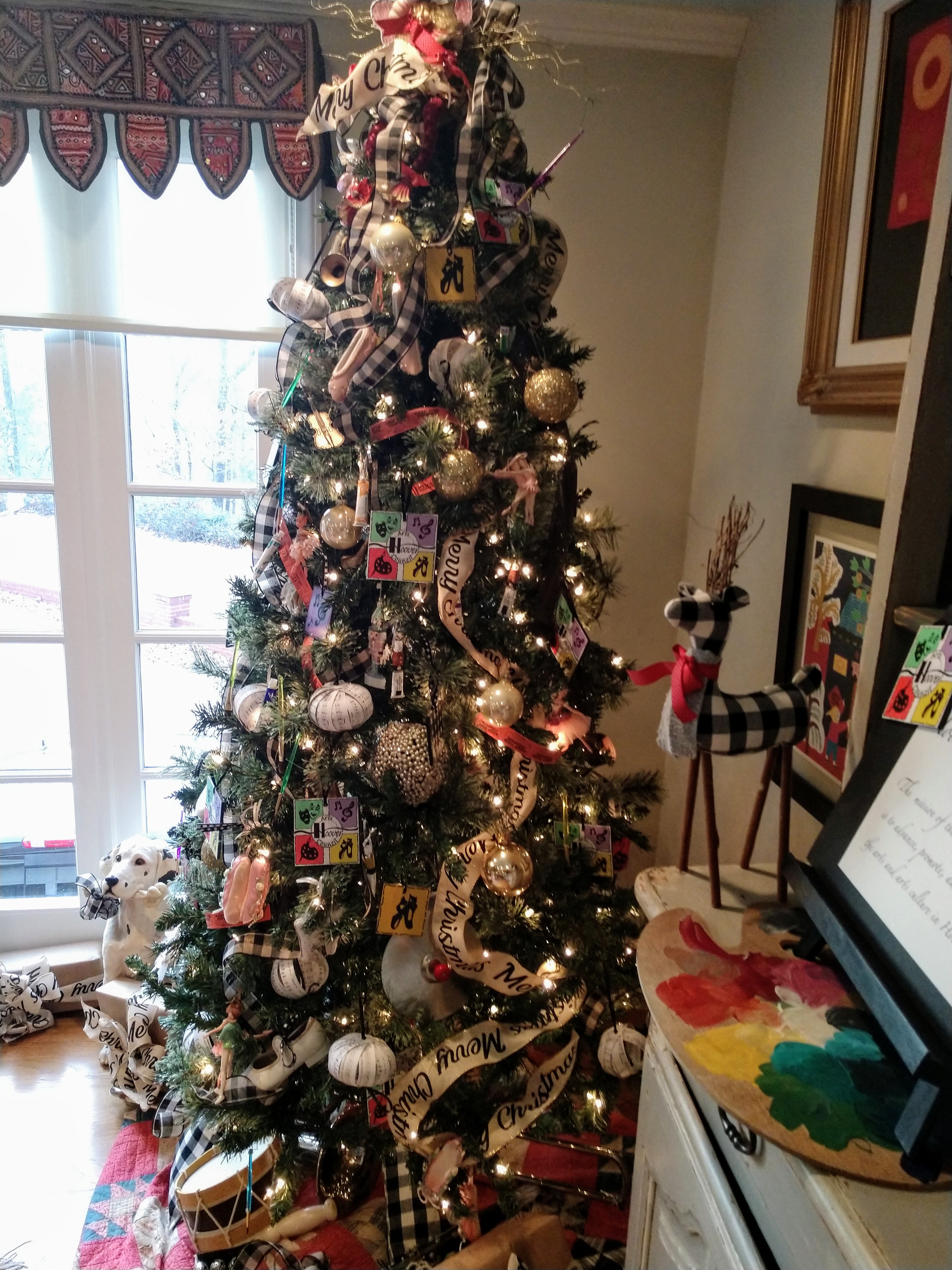
Compiled by the Birmingham Times Staff
Alabama was the first state to recognize Christmas as an official holiday, and the tradition began in 1836.
—–
“Silent Night” was first sung as part of a church service in Austria. A guitar was used because the church organ was so badly rusted it couldn’t be played.
—–
In Germany there are many different characters for Christmas. Nikolaus comes on December 5th and on December 24th when the actual opening of the gifts is happening ,they have been brought either by Knecht Ruprecht, Weihnachtsmann, or the Christkindl, (Christ child) wich is an angelic child dressed in a white and or golden dress much like a long nightgown. It has wings, and has usually a small horse or a donkey as a companion.
—–
In North America, children put stockings out at Christmas time. Their Dutch counterparts use shoes.
—–
The poinsettia, a traditional Christmas flower, originally grew in Mexico, where it is also known as the ‘Flower of the Holy Night’. Joel Poinsett first brought it to America in 1829.
—–
When visiting Finland, Santa leaves his sleigh behind and rides on a goat named Ukko. Finnish folklore has it that Ukko is made of straw, but is strong enough to carry Santa Claus anyway.
—–
When distributing gifts in Holland, St. Nicholas is accompanied his servant, Black , who is responsible for actually dropping the presents down their recipients’ chimneys. He also punishes bad children by putting them in a bag and carrying them away to Spain.
—–
The day after Christmas, December 26, is known as Boxing Day. It is also the holy day of St. Stephen.
Boxing Day was originally celebrated in England,for the servants to the rich people. After Chrismas,the servants “boxed up” all the left-overs from the rich people and bring them home.
In Syria, Christmas gifts are distributed by one of the Wise Men’s camels. The gift-giving camel is said to have been the smallest one in the Wise Men’s caravan
—–
One town in Indiana is called Santa Claus. There is also a Santa, Idaho.
—–
The popular Christmas song “Jingle Bells” was actually written for Thanksgiving. The song was composed in 1857 by James Pierpont, and was originally called “One Horse Open Sleigh”.
—–
There are 364 gifts mentioned in “The Twelve Days of Christmas”.
—–
The Puritans forbade the singing of Christmas carols.
—–
George Frederick Handel’s great Christmas oratorio, “The Messiah”, was first performed in 1742, in Dublin.
America’s official national Christmas tree is located in King’s Canyon National Park in California. The tree, a giant sequoia called the “General Grant Tree”, is over 90 meters (300 feet) high, and was made the official Christmas tree in 1925.
—–
The first Christmas was celebrated on December 25, AD 336 in Rome.
—–
Artificial Christmas trees have outsold real ones since 1991.
—–
St. Nicholas was bishop of the Turkish town of Myra in the early 4th century. The Dutch first made him into a Christmas gift-giver, and Dutch settlers brought him to America where his name eventually became the familiar Santa Claus.
—–
In Armenia, the traditional Christmas Eve meal consists of fried fish, lettuce and spinach.
—–
Christmas has different meanings around the world; Christmas Eve in Japan is a good day to eat fried chicken and strawberry shortcake.
—–
Many of the traditions associated with Christmas (giving gifts, lighting a Yule log, singing carols, decorating an evergreen) date back to older religions.
—–
In 1647, the English parliament passed a law made Christmas illegal. The Puritan leader Oliver Cromwell, who considered feasting and revelry on what was supposed to be a holy day to be immoral, banned the Christmas festivities. The ban was lifted only when Cromwell lost power in 1660.
—–
Michigan has no official state song, but one, ‘Michigan, My Michigan,’ is frequently used. The words were written in 1863, and the melody used is that of the Christmas song “O Tannenbaum”.
—–
Franklin Pierce was the first president to decorate an official White House Christmas tree.
—–
Christmas Crackers were invented around 1846 by Tom Smith who developed them for Christmas from the French habit of wrapping sugared almonds in twists of paper as gifts.
—–
J.S.Bach inscribed most of his musical scores with the note ‘In dem Namen Jesus’, or in English ‘In the name of Jesus’.
—–
The Canadian province of Nova Scotia leads the world in exporting lobster, wild blueberries, and Christmas trees.
—–
Roast turkey did not appear consistently on royal Christmas Day menus until 1851 when it replaced roast swan. The medieval dish of Boar’s head remained popular with Royals for much longer.
—–
Electric Christmas lights were first used in 1854.
—–
Many of the popular Christmas traditions today found their roots in Saturnalia: Branches from evergreen trees were used during winter solstice as a reminder of the green plants that would grow in spring when the sun gods grew strong.
—–
Germans are thought to be the first to bring “Christmas trees” into their homes during the holidays and decorate them with cookies and lights.
—–
The Christmas tree made its way to America in the 1830s but wasn’t popular until 1846, after Germany’s Prince Albert brought it to England when he married Queen Victoria. The two were sketched in front of a Christmas tree and the tradition instantly became popular. Royal fever was real even back then.
—–
The well-known reason we give presents at Christmas is to symbolize the gifts given to baby Jesus by the three wise men. But it may also stem from the Saturnalia tradition that required revelers to offer up rituals to the gods.
—–
Because of its roots in pagan festivals, Christmas was not immediately accepted by the religious. In fact, from 1659 to 1681, it was illegal to celebrate Christmas in Boston, of all places. You were fined if you were caught celebrating.
—–
After his death, the legend of St. Nicholas spread. St. Nick’s name became Sint-Nicolaas in Dutch, or Sinter Klaas for short. Which is only a hop, skip and a jump to Santa Claus.
—–
Santa Claus delivering presents comes from Holland’s celebration of St. Nicholas’ feast day on Dec. 6. Children would leave shoes out the night before and, in the morning, would find little gifts that St. Nicholas would leave them.
—–
One of the reasons we leave milk and cookies for Santa is because Dutch kids would leave food and drink for St. Nicholas on his feast day.
—–
And we leave carrots for Santa Claus’ reindeer because, in Norse mythology, people left hay and treats for Odin’s eight-legged horse, Sleipnir, “in hopes the god would stop by their home during his Yule hunting adventures.” Dutch children adopted this tradition too and would leave treats for St. Nick’s horse.
—–
The look of Santa Claus we have today was created at an 1804 meeting of the New York Historical Society, where member John Pintard handed out wooden cutouts of jolly old St. Nick in front of stockings filled with toys.
—–
Though Santa Claus has worn blue and white and green in the past, his traditional red suit came from a 1930s ad by Coca Cola.
—–
And the image of him flying in a sleigh started in 1819…and was dreamt up by the same author who created the Headless Horseman, Washington Irving.
—–
Rudolph was actually conceived by a department store, Montgomery Ward, as a marketing gimmick to get kids to buy holiday coloring books.
—–
Rudolph almost didn’t have a red nose either: At the time, a red nose was a sign of chronic alcoholism and Montgomery Ward thought he would look like a drunkard.
—–
The poem that introduced us to the other eight reindeer, “A Visit From St. Nicholas,” actually name-dropped Dasher, Dancer, Prancer, Vixen, Comet, Cupid, Duner and Blixem. (Which, like Donner and Blitzen, come from the German words for thunder and lightning.)
—–
Over the years, other reindeer have been name-checked on Santa’s sleigh team, such as: Flossie, Glossie, Racer, Pacer, Scratcher, Feckless, Ready, Steady and Fireball (no relation to the whiskey).
—–
The first batch of eggnog in America was crafted at Captain John Smith’s Jamestown settlement in 1607, and the name eggnog comes from the word “grog,” which refers to any drink made with rum.
—–
“Silent Night” is the most-recorded Christmas song in history, with over 733 different versions copyrighted since 1978.
—–
Legend has it that “Silent Night” was written by Father Joseph Mohr in Austria, who was determined to have music at his Christmas service after his organ broke. In reality, a priest wrote it while stationed at a pilgrim church in Austria.
—–
Mariah Carey’s “All I Want for Christmas Is You” holds the Guinness World Records title for the highest-charting holiday song. In the music video, Santa is played by Mariah’s then-husband, Tommy Mottola.
Was Jesus really born on December 25?
There’s no solid evidence that Jesus was born in December. In fact, his birth wasn’t celebrated or even mentioned until centuries after the establishment of Christianity. Clues from the biblical account point to a Spring birth (shepherds tending their flocks) and it’s likely that the Romans chose December 25 as the date to coincide with Saturnalia and convince the empire’s remaining pagans to accept the strange new religion.
Who was the original Santa Claus?
The legendary figure of Santa Claus can be traced back to St. Nicholas, a Turkish-born monk from the Third Century who gained fame wandering the countryside helping the poor and sick. In Holland, St. Nicholas is known as Sinter Klaas, and the anniversary of his death on December 6 is a much-loved holiday. Dutch immigrants to New York brought Sinter Klaas to America, where writers like Washington Irving penned entertaining tales of the anglicized Santa Claus. But the enduring details of Santa’s story—the red suit, rotund belly and reindeer-pulled flying sleigh—were popularized by the 1822 poem “An Account of a Visit from St. Nicholas” with its immortal first line, “‘Twas the night before Christmas…”
What is a Yule log?
An Iron Age tradition of burning huge logs to ring in the New Year evolved over the centuries into a rich Christmas dessert made of rolled sponge cake and whipped cream. At the end of December, Celtic and Gaelic cultures used to decorate a large log with holly, pine cones, and a splash of wine and burn it to cleanse the old year and usher in the spring. Starting as far back as the 1600s, the original Yule log was replaced by a log-shaped cake decorated to look like the real thing, but taste much better.
Why do we kiss under the mistletoe?
The custom of stealing a Christmas kiss under the mistletoe has its clearest connection with Norse mythology, in which Frigg, the goddess of love, promised to kiss any creature that passed beneath the evergreen sprig after it was used to revive her son, Baldur, from the dead (after initially killing him). The Celtic Druids also saw mistletoe, which blossoms in the winter, as a sacred symbol of vivacity and prescribed it for fertility issues. The modern tradition of meeting under the mistletoe started in England and has won over surreptitious smoochers worldwide.
‘Rudolph the Red-Nosed Reindeer’ began as a marketing campaign
In 1939, retail giant Montgomery Ward came up with the idea of writing its own Christmas book to hand out to kids during the coming holiday shopping season. The task fell to copywriter Robert May, who took inspiration from his daughter’s love of the reindeers at the zoo and his own childhood as a small, shy kid who was never invited to play sports. More than 2 million copies of the original “Rudolph the Red-Nosed Reindeer” illustrated booklet were distributed in 1939 and the character instantly became a beloved part of American Christmas lore.
When did American start decorating Christmas trees?
For thousands of years, cultures from Egypt to Northern Europe have celebrated the Winter solstice by decorating their homes with green palm fronds and evergreen boughs to breathe life into the shortest, darkest day of the year. The first Christmas trees were brought indoors by 16th-century German Christians, and Martin Luther is credited with placing the first burning candles in a Christmas tree to mimic the sparkling stars. Puritanical American preachers railed against “pagan” Christmas trees and the tradition didn’t catch on in U.S. homes until the 1890s.
When did poinsettias become a popular Christmas decoration?
In Mexico, poinsettias grow wild in large bushes that flush with bright red leaves in the dead of winter. In fact, in Mexico poinsettias are called “flor de nochebuena” or “Christmas Eve flower.” They got their odd English name from Joel R. Poinsett, the very first U.S. minister to Mexico, who brought back the red-and-green plants from a visit in 1828. Christmas was just beginning to be widely celebrated in America, and Poinsett rightly predicted that the festive plants would be a seasonal hit. By 1900, they were a universal symbol of Christmas.
A wrong number call to NORAD launched the Santa Tracker
In 1955, at the height of Cold War tensions with the Soviet Union, a general at the Continental Air Defense Command (CONAD) in Colorado received a call on a top-secret hotline. Bracing himself for news of a missile attack, the general instead heard the shaky voice of a young boy asking, “Are you really Santa Claus?” The number had been mistakenly published in the newspaper as a Sears Santa hotline, but instead of dismissing the incident, CONAD (renamed the North American Aerospace Defense Command or NORAD in 1958) embraced the role as the official Santa Tracker, using its massive satellite network once a year to broadcast Santa’s exact whereabouts. Today, 1,500 NORAD troops and volunteers answer phone lines on Christmas Eve.
What other important events have happened on Christmas Day?
Late on Christmas Day, 1776, George Washington led the Continental Army across the icy Delaware River in a surprise attack on the British forces. Charlamagne, the “Father of Europe,” was crowned emperor of the Romans by Pope Leo III on Christmas Day in the year 800 A.C. The Treaty of Ghent officially ending the War of 1812 was signed on Christmas Day, 1814, and the Apollo 8 crew orbited the moon for the very first time on Christmas Day, 1968, signing off their live TV broadcast with the memorable, “Merry Christmas and God bless all of you, all of you on the good Earth.”
History.com, funology.com, etonline.com.



